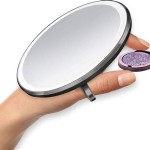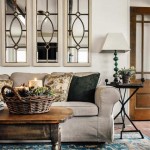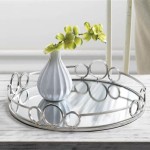Wing Mirror Paint Repair
Wing mirrors, constantly exposed to the elements and the occasional mishap, are prone to paint damage. Scratches, chips, and fading can detract from a vehicle's appearance and, in some cases, even compromise the mirror's functionality. Repairing this damage can restore the vehicle's aesthetics and protect the mirror from further deterioration. This article will explore the process of wing mirror paint repair, covering various techniques and considerations.
The first step in any wing mirror paint repair is assessing the extent of the damage. Minor scratches might only require a touch-up paint application, while deeper gouges or extensive fading may necessitate more involved procedures. Identifying the type and severity of the damage will dictate the appropriate repair strategy.
Gathering the necessary materials is crucial for a successful repair. This typically includes cleaning agents, such as degreaser and wax remover, sandpaper in varying grits, primer, paint specifically matched to the vehicle's color code, clear coat, masking tape, and polishing compound. Specialized tools, like a paint pen or an airbrush, might be required depending on the complexity of the repair.
Preparation is key to achieving a professional-looking finish. Thoroughly cleaning the damaged area with a degreaser and wax remover is essential for ensuring proper paint adhesion. Masking tape should be used to protect surrounding areas from overspray or accidental sanding. For deeper scratches or chips, sanding the area with progressively finer grits of sandpaper will create a smooth surface for the primer and paint to adhere to.
Primer application is often necessary, especially for deeper damage, to provide a uniform base for the paint. Allowing the primer to dry completely according to the manufacturer's instructions is crucial before proceeding with the paint application. Multiple thin coats of primer are generally recommended, as this provides better coverage and prevents runs or drips.
Matching the paint color to the vehicle's original finish is essential for a seamless repair. The vehicle's color code can usually be found on a sticker located inside the driver's side doorjamb or under the hood. Automotive paint suppliers can then mix the exact color based on this code. Applying the paint in thin, even coats, allowing each coat to dry before applying the next, is crucial for achieving a professional finish.
Once the paint has dried thoroughly, a clear coat application is typically recommended. Clear coat provides a protective layer against UV rays, environmental contaminants, and minor scratches. It also enhances the gloss and depth of the paint color, resulting in a more polished appearance. Similar to primer and paint application, multiple thin coats of clear coat are generally preferred.
After the clear coat has dried and cured, the repaired area may require polishing to blend it seamlessly with the surrounding paint. Using a polishing compound and a soft cloth, the area can be carefully buffed to remove any imperfections and achieve a smooth, even finish. This step is particularly important for larger repairs or when blending new paint with existing paint.
Different repair techniques exist depending on the specific damage. For minor scratches, a touch-up paint pen or brush might suffice. Deeper scratches or chips may require filling with a putty specifically designed for automotive paint repair before sanding, priming, and painting. For extensive damage or fading, a complete respray of the wing mirror might be necessary.
Preventing further damage to wing mirrors is possible through various preventative measures. Regular cleaning with a car wash soap and water can remove contaminants that can scratch the paint. Applying a wax or sealant can provide an additional layer of protection against environmental factors. Parking carefully and avoiding tight spaces can also help prevent accidental scrapes and bumps.
Cost considerations for wing mirror paint repair vary depending on the extent of the damage and the chosen repair method. Minor touch-ups can be relatively inexpensive, while more extensive repairs requiring professional assistance can be significantly more costly. DIY repairs can save money, but require the proper tools, materials, and expertise to achieve a satisfactory result.
Several resources are available for individuals seeking guidance on wing mirror paint repair. Online tutorials and videos can provide step-by-step instructions and demonstrations of various techniques. Automotive forums and communities can offer advice and tips from experienced enthusiasts. Local auto body repair shops can provide professional assessments and estimates for more complex repairs.
When considering DIY repairs, individuals should carefully assess their skills and experience. Improper techniques or the use of incorrect materials can result in a subpar finish or even further damage to the wing mirror. If unsure about any aspect of the repair process, seeking professional assistance is always recommended.
Professional auto body repair shops offer expertise and specialized equipment for handling complex wing mirror paint repairs. They possess the knowledge and experience to accurately match paint colors, perform advanced repair techniques, and achieve a flawless finish. While professional repairs may be more expensive than DIY methods, they often provide a higher quality and longer-lasting result.

Wing Mirror Painting Exeter Smart World Car Repairs In

Black Plastic Wing Mirror Scuff Detailing World Forum

Magic Eraser Detailing Part 2 Removing Transfer From Side Mirrors

Wing Mirror Repair And Replacement Car Cosmetics

Repair Scratches On Wing Mirror Casings Dremel

Wing Mirror Repair And Replacement Car Cosmetics

Respraying A Car Wing Mirror
How To Repair A Car Side Mirror With Adhesive Bonding Cover

Black Plastic Wing Mirror Scuff Detailing World Forum

How To Replace Wing Mirror Glass Without Breaking Teq








